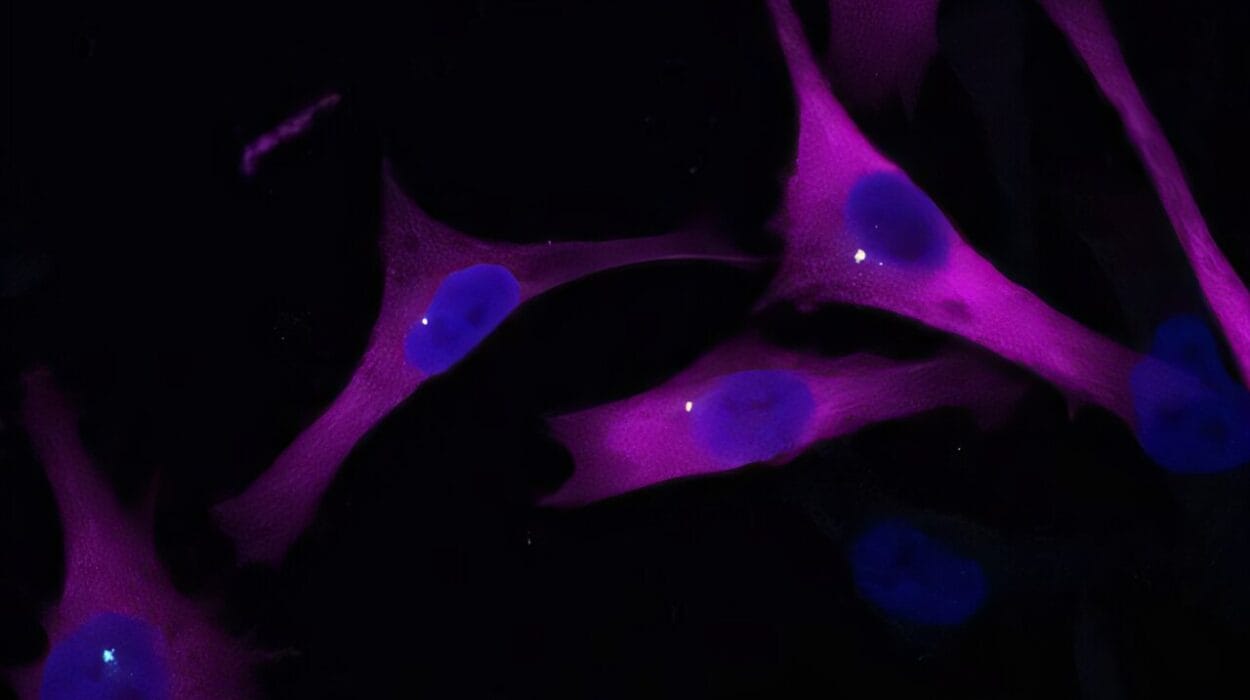We’ve all heard it. The idea that some of us are “left-brained” — logical, analytical, and detail-oriented — while others are “right-brained” — creative, intuitive, and artistic. This belief has seeped into pop culture, shaped educational theories, influenced career counseling, and even found its way into personality quizzes. It’s a seductive idea, elegant in its simplicity and comforting in its clarity. We crave easy explanations for who we are and how we think.
But what if the story is more complicated? What if the popular version of the left brain vs. right brain dichotomy is more myth than science? What if, in reducing the complexities of the human brain to two tidy categories, we’ve actually misunderstood the marvel of our own minds?
To understand how this idea became so popular — and why neuroscientists have pushed back — we must journey through the history of brain science, the power of storytelling, and the latest discoveries that challenge everything we thought we knew about our cerebral selves.
The Origins of the Split-Brain Theory
The fascination with the brain’s two hemispheres isn’t new. For centuries, physicians and philosophers pondered whether different parts of the brain were responsible for different functions. But the modern concept of left brain versus right brain thinking traces back to groundbreaking research in the 1960s and 70s, most notably the work of neuroscientist Roger W. Sperry.
Sperry, who would later win a Nobel Prize for his work, studied patients who had undergone a radical form of surgery to treat epilepsy. These patients had their corpus callosum — the bundle of neural fibers that connects the two hemispheres — severed in an attempt to reduce the spread of seizures. The result was astonishing. When the two hemispheres could no longer communicate, strange things began to happen.
In Sperry’s experiments, patients were shown images in one visual field (which is processed by the opposite hemisphere) and asked to describe what they saw. If the image appeared in the right visual field, and thus was processed by the left hemisphere, they could describe it easily. But if it was in the left visual field, going to the right hemisphere, they were often unable to name it — even though they could still point to it or draw it. The left brain, it seemed, was dominant for language. The right brain, meanwhile, had its own specialties — spatial reasoning, visual imagery, facial recognition.
These findings were remarkable. Sperry had essentially created two minds in one skull. The left and right hemispheres, though connected in a typical brain, could function independently. Each had its own perceptions, memories, and even preferences. The implications were thrilling — and misunderstood.
From Science to Pop Culture: A Seductive Simplification
As is often the case, the public ran faster with the idea than the science could support. By the 1980s, the notion that people were either “left-brained” or “right-brained” had become mainstream. Bookstores were filled with self-help guides promising to unlock your “right-brain creativity” or enhance your “left-brain logic.” Corporations developed personality assessments to sort employees into hemispheric categories. Educational theorists proposed classroom strategies based on supposed hemispheric dominance.
In this version of the story, the left brain was the domain of logic, language, and linear thinking — the home of mathematicians, engineers, and lawyers. The right brain was the seat of creativity, intuition, and big-picture thinking — beloved by artists, musicians, and dreamers. Everyone had both, of course, but supposedly, one side “dominated,” shaping personality and preferences.
It was a narrative tailor-made for a culture obsessed with identity and self-discovery. It offered a simple, binary framework in a world that is anything but. Are you rational or emotional? Organized or spontaneous? Word person or picture person? Just find your dominant hemisphere and all will be revealed.
But science, as it often does, had more to say.
The Neuroscience Strikes Back
Over the past few decades, advances in brain imaging technology — including fMRI and PET scans — have allowed scientists to study the brain in action with unprecedented precision. And what they found was sobering for the left-brain/right-brain enthusiasts.
Yes, there are hemispheric differences. And yes, some functions are more heavily lateralized to one side. Language is usually more dominant in the left hemisphere, especially in right-handed individuals. The right hemisphere is often more involved in attention, emotion, and spatial awareness. But the key word here is more — not exclusively.
Brain functions are not neatly divided like compartments in a toolbox. They’re distributed across networks. Even highly specialized functions require cooperation between regions in both hemispheres. Creativity, for example, does not reside solely in the right brain. It requires verbal reasoning, memory, and executive function — skills involving both sides of the brain.
Moreover, personality traits do not map cleanly onto hemisphere dominance. There is no evidence that being “left-brained” makes someone more logical, or that being “right-brained” makes someone more artistic. That’s a psychological myth with no foundation in neuroscience.
In 2013, a team at the University of Utah conducted one of the most comprehensive investigations into this issue. Analyzing brain scans from over 1,000 individuals, they found no consistent patterns of hemispheric dominance. People did not consistently use one hemisphere more than the other in a way that aligned with the popular stereotypes. The researchers concluded that the left-brain/right-brain model of personality was, in a word, wrong.
Complexity Over Simplicity: How the Brain Really Works
So if the left brain/right brain narrative is flawed, what’s the truth? The answer, as is often the case in science, is far more nuanced — and far more fascinating.
The human brain is a deeply interconnected organ. While certain functions do tend to lateralize, most tasks involve multiple regions working together. For example, understanding a spoken sentence involves areas in both hemispheres — one for decoding the sound, another for interpreting meaning, another for visualizing context, and so on.
The corpus callosum, once seen as merely a highway between two separate cities, is now recognized as a bustling superhighway that facilitates near-constant communication between hemispheres. The hemispheres are not rivals. They are partners in a synchronized dance of cognition.
Take creativity. Studies show that truly creative thinking involves both divergent thinking (often linked to right-hemisphere function) and convergent thinking (associated with left-hemisphere logic). Great artists, writers, and inventors use both kinds of thinking. The creative process is not confined to one side of the brain. It’s born of integration — of ideas crossing hemispheric boundaries and colliding in unexpected ways.
Even emotions — long considered the domain of the right brain — are more complex than once believed. Different emotions engage different networks. Anger, joy, fear, sadness — all these states light up regions across both hemispheres, often in surprising patterns. And logic, far from being cold and separate from emotion, often depends on emotional regulation and social reasoning.
The truth is that the brain defies binary categories. It is a symphony, not a solo performance.
Why the Myth Persists
If the left brain vs. right brain idea is so flawed, why does it still persist?
Part of the reason lies in its intuitive appeal. Humans love dualities: good and evil, day and night, yin and yang. The brain’s symmetrical structure invites comparisons. It’s easy to imagine two hemispheres locked in a kind of cerebral tug-of-war.
There’s also a commercial incentive. Personality quizzes, educational programs, leadership trainings — these are big businesses. Simple models sell. They promise insight, self-awareness, and control. But simplicity can be seductive, and seduction is rarely the same as truth.
Additionally, early scientific findings were often oversimplified in the media. The real nuance of Sperry’s experiments was lost in translation. What began as a narrow investigation into the effects of a specific surgical procedure became, in public imagination, a sweeping theory of personality.
Even neuroscience itself has occasionally fed the myth, with early imaging studies highlighting “activation” in one hemisphere during certain tasks without clarifying that the other hemisphere was also active — just perhaps less so.
Beyond the Binary: Embracing Cognitive Diversity
Rather than divide people into left-brained or right-brained, a more meaningful approach is to recognize the incredible diversity in cognitive styles and preferences — and the dynamic nature of the brain.
Some people do favor analytical thinking. Others are more intuitive. Some are visual learners, others verbal. These differences are real — but they don’t stem from hemispheric dominance. They emerge from a complex interplay of genetics, experience, education, environment, and neuroplasticity.
Neuroplasticity — the brain’s remarkable ability to change and adapt — is one of the most exciting discoveries of modern neuroscience. It reveals that our brains are not static. They are constantly rewiring themselves in response to learning, injury, and experience. No one is doomed to be “bad at math” or “not the creative type.” These are not traits fixed in the stone of brain anatomy. They are skills that can be developed.
Even the notion of lateralization is more fluid than once thought. In left-handed individuals, for example, language is more likely to be distributed across both hemispheres. In people who suffer brain damage, functions can migrate to new areas. The brain is not a machine. It is a living, learning, adapting organ.
The Emotional Core of the Debate
At its heart, the left brain/right brain debate isn’t just about anatomy. It’s about identity. People want to understand themselves. They want to know why they think, feel, and behave the way they do. They want permission to be who they are — whether that’s a dreamy poet or a meticulous accountant.
The myth endures because it offers something more than science. It offers belonging. It tells people that their way of being isn’t a flaw, it’s a feature — rooted in brain structure, immutable and real.
That’s not inherently harmful. But when the myth becomes limiting — when people use it to define themselves narrowly or to judge others — it becomes a cage rather than a key.
Real self-understanding comes not from simplistic categories, but from curiosity. From embracing the richness of our minds, the complexity of our thoughts, the paradoxes of our personalities.
You are not your left hemisphere. You are not your right. You are a whole brain, a whole person, a universe of connections.
Toward a More Accurate — and More Human — View of the Brain
So where does that leave us? If the old dichotomy is flawed, what should replace it?
Not a new set of labels, but a new mindset.
Let’s teach people that cognitive abilities are not fixed. Let’s help students see themselves not as right-brained artists or left-brained scientists, but as multifaceted learners with boundless potential. Let’s recognize that logic and emotion, reason and intuition, analysis and creativity — these are not opposites. They are allies.
Let’s move away from binary thinking and toward brain integration. The most powerful minds are not those that lean left or right, but those that build bridges — between ideas, disciplines, emotions, and people.
And above all, let’s remain humble before the vastness of the mind. The brain is not a machine to be mapped or a puzzle to be solved. It is a mystery to be marveled at, an ever-unfolding story told in the language of neurons, shaped by the rhythms of life, and written in every thought we’ve ever had.
You are not defined by a hemisphere. You are defined by what you do with the whole, magnificent, mysterious brain you carry with you — every moment of every day.






